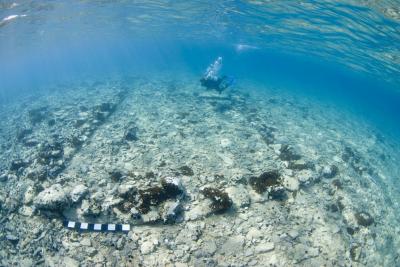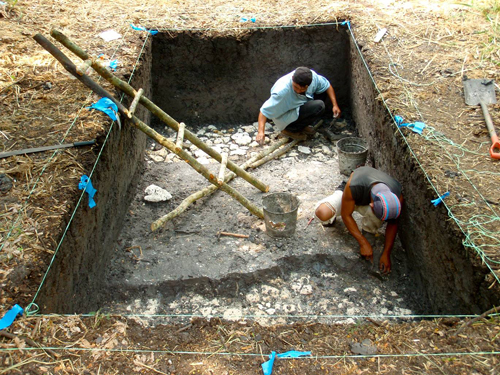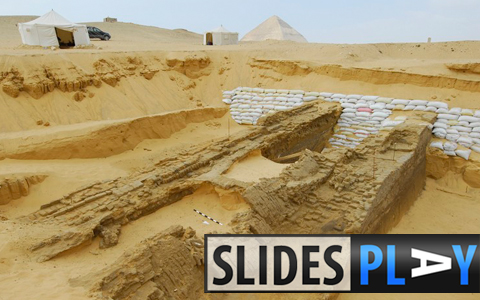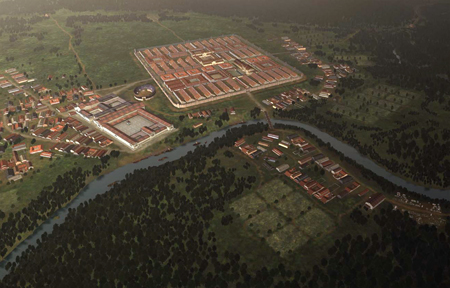Acrobats from Burma, workers from Central or West Asia, and a mausoleum design inspired by work in the Middle East the Mauseoleum of Chinas First Emperor was a cosmopolitan place says Dr. Duan Qingbo, the man in charge of excavating it. The mausoleum was created about 2,200 year ago and served as a tomb for Qin Shi Huang the first emperor of China. While the emperors tomb is largely unexcavated, archaeologists have found thousands of life-size terracotta figures nearby. Its believed that this army was created to serve the emperor in the afterlife. Dr. Duan (Duan is his family name)…
-
-
Archaeologists have discovered two ancient temples – over 4000 years old – in Peru’s northern jungle. If the preliminary dating is correct, this is the country’s oldest temple building found so far. The temples were found near the village of Jaén, Cajamarca, in northern Peru. The excavation sites (image slideshow), locally known as Monte Grande and San Isidro, were previously used for agriculture and even as a rubbish dump. The Excavations at the Monte Grande and San Isidro Temples The complex appears to have been built around 2,000 BC. According to Peruvian archaeologist Quirino Olivera, the temples can be associated…
-
Discovered over 40 years ago just off the coast of Greece, Pavlopetri is the oldest submerged city in the world and the only sunken city in Greece that predates the writing of Plato’s Atlantis myth. Now, for ‘Pavlopetri, The City Beneath the Waves’, BBC Two is to follow the team of experts excavating the submerged site. “The future of archaeology is under the water and we are now armed with the technology to unlock the countless fascinating secrets the sea is yet to yield up to us, says BBCTwo’s Janice Hadlow. The documentary is planned to air next year, and…
-
At the ancient city of Sagalassos, Turkey, archaeologists have discovered the oldest Roman baths in Asia Minor known to date. The new find means the Capito Baths in Miletus, built during the reign of Emperor Claudius (41-54 AD),have to concede theirposition as the oldest known Roman bathing complex in Anatolia. Oldest Roman Bathsin Asia Minor The ‘Old Bath’ was discovered at Sagalassos, an ancient city from Hellenistic and Roman times in southwestern Turkey. They were locatedbelow the previously unearthed Imperial Baths, dated to120-165 AD. The newly discovered bathing complex is much older and smaller than the Imperial Baths which have…
-
Nicole Alexanian Egyptologist Dr. Nicole Alexanian holds a PhD in Egyptology from Universität Heidelberg. Since 2000 she has been directing a German Archaeological Institute project at Dahshur in Egypt. The site is known as the location of several pyramids. These include the Bent and Red Pyramids, constructed by the pharaoh Snefru during the Egyptian 4th dynasty. It is also home to the Black Pyramid, constructed by Amenemhat III during the Middle Kingdom. Dr. Alexanian and her team have been reconstructing what the Dahshur landscape looked like in ancient times, examining its topography, geology and climate. They found that the ground…
-
London-based nightclub Ministry’s motto of sound system first, interior design second, lights third made them one of the most famous gathering places for those who worship bass. But how did those conceptualising Stonehenge plan to enchantthe Neolithic congregate? Rupert Till, an acoustics and music technology expert, asserts the stone circle would have created a perfect (early design) amplifier – making Stonehenge the place to be from the Stone Age onwards. Professor Tillsays Stonehenge when it was in perfect shape would have worked perfectly to resonate sound, creating trance-like music which would have aided rituals and worship at the site. To…
-
Archaeologists digging at the ancient Maya city of Uxul, Mexico, havelocated an artificial lake the size of a football field. The two metres deep pool its floor a mosaic of ceramic shards was constructed about 1,500 years ago. Uxul is located on the Mexican Yucatn Peninsula, near the Guatamalan border and only twentysix kilometres southwest of Unesco World Heritage Site Calakmul. German and Mexican archaeologists started systematically excavating and mapping its ruins in 2009. In doing so, we stumbled upon two square water reservoirs, each about 100 metres by 100 metres, says Dr Iken Paap from the University of Bonn.…
-
Archaeologists have discovered a large structure to the northeast of the 4,600 year old Bent Pyramid which may be the remains of an ancient harbour. It connects to one of the pyramids temples by way of a 140 meter long causeway. The discoveries were made by a team from the Cairo department of the German Archaeological Institute, and the Free University of Berlin. The team used magnetic survey and drill cores soundings to make the finds. The structure is mostly unexcavated and only a portion of the causeway has been unearthed. The structure itself is U-shaped, 90 meters by 145…
-
Archaeology students learning to use mapping equipment have discovered a complex of monument buildings outside the Roman fortress at Caerleon, South Wales. The team says it will lead to a complete rethink about how Britain was conquered and occupied by the Roman forces almost 2,000 years ago. The students from the Cardiff Universitys School of History, Archaeology and Religion were learning how to use geophysical equipment in fields outside the Caerleon fortress. Squeezed into the ground between the amphitheatre and the River Usk, the outlines of a series of huge buildings were revealed. The discovery of the settelement’s monumental suburb…
-
Archaeologists have discovered a 1,800 year old tunnel that leads to a system of galleries 12 meters below Teotihuacan’s Temple of Quetzalcoatl, the Feathered Serpent, in Mexico. Spanning an area of more than 83 square kilometres, Teotihuacan is one of the largest archaeological sites in Mexico and is a UNESCO World Heritage Site. The city had nearly 250,000 inhabitants when it was at its height in the early 1st millennium AD. It also contains some of the largest pre-Columbian pyramids in the New World. Archaeologists hope that the galleries they detected are actually the tombs of Teotihuacans rulers. “For a…






